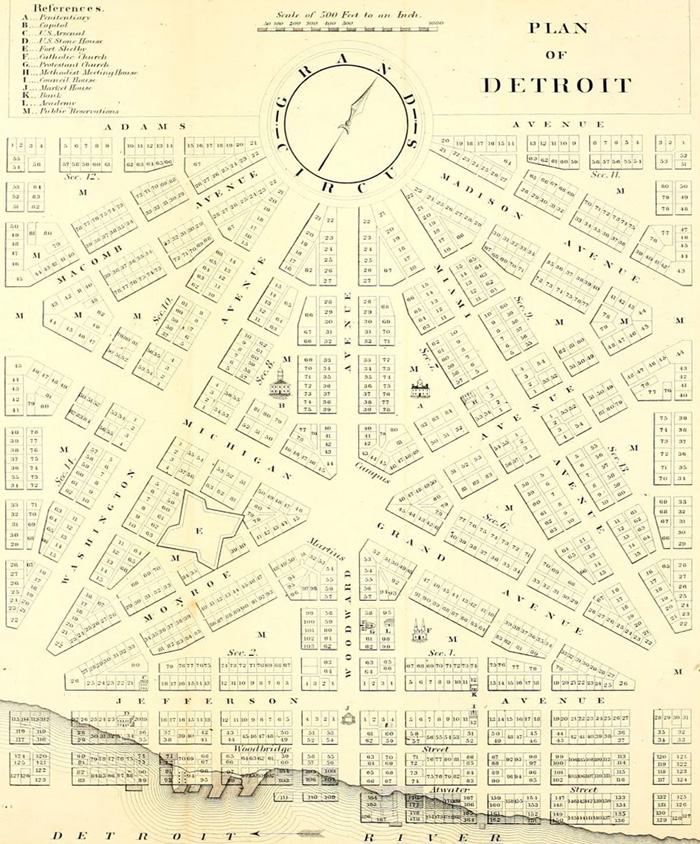
Since 1805, Detroit’s official motto has been Speramus meliora resurget cineribus. Coined by Catholic priest Gabriel Richard, the saying translates to “We hope for better things; it will arise from the ashes.” And since a fire ravaged the young city that year, Detroit “rose from the ashes” both literally and metaphorically. Fr. Richard hoped his work would help the city overcome this devastation—and that attitude has helped Detroit face disaster after disaster in the centuries since. This historical map of Detroit, created in 1807, shows the city’s (first) rebirth.
The map lays out the plan for rebuilding the city after the fire. Augustus Woodward, the first chief justice of the Michigan Territory, designed the project and helped bring it to fruition. His new grid, built around Grand Circus Park, featured a capital building, Catholic and Protestant churches and a statehouse. You can also infer the importance of Detroit as a frontier city. The notable Fort Shelby (later called Fort Detroit) on Monroe Avenue served an important role in the War of 1812.
Compare this map to one of modern Detroit. You’ll see the basic layout of the city center hasn’t changed too much. Grand Circus Park (now a semi-circle instead of the planned full circle) still exists today, as do many of the original streets. Detroit’s main thoroughfare, Woodward Avenue, bisects the park and bears Woodward’s name.
The fire wasn’t the only tragedy to befall Detroit. The city, at the crossroads of British Canada and what would become the United States, served as a backdrop for many conflicts in 18th- and 19th-century wars. The British first took Fort Detroit from the French in the French and Indian War, and Odawa chief Pontiac seized the fort in his famous rebellion in 1763. The British again invaded the city during the War of 1812. Several race riots have rocked the city throughout history: in 1863 during the Civil War, in 1943 during World War II and in 1967 when the 12th Street Riot led to 43 deaths. “Motor City,” known for its importance in American automaking, felt the Great Recession in 2008 particularly hard. Following the collapse of the auto industry, Detroit declared bankruptcy in 2013. And yet, the city continues to rise from the ashes.
For more interesting, insightful old maps, check out The Family Tree Historical Atlas of American Cities. This book compiles beautiful, full-color maps of America’s 16 most important cities, including Detroit.




